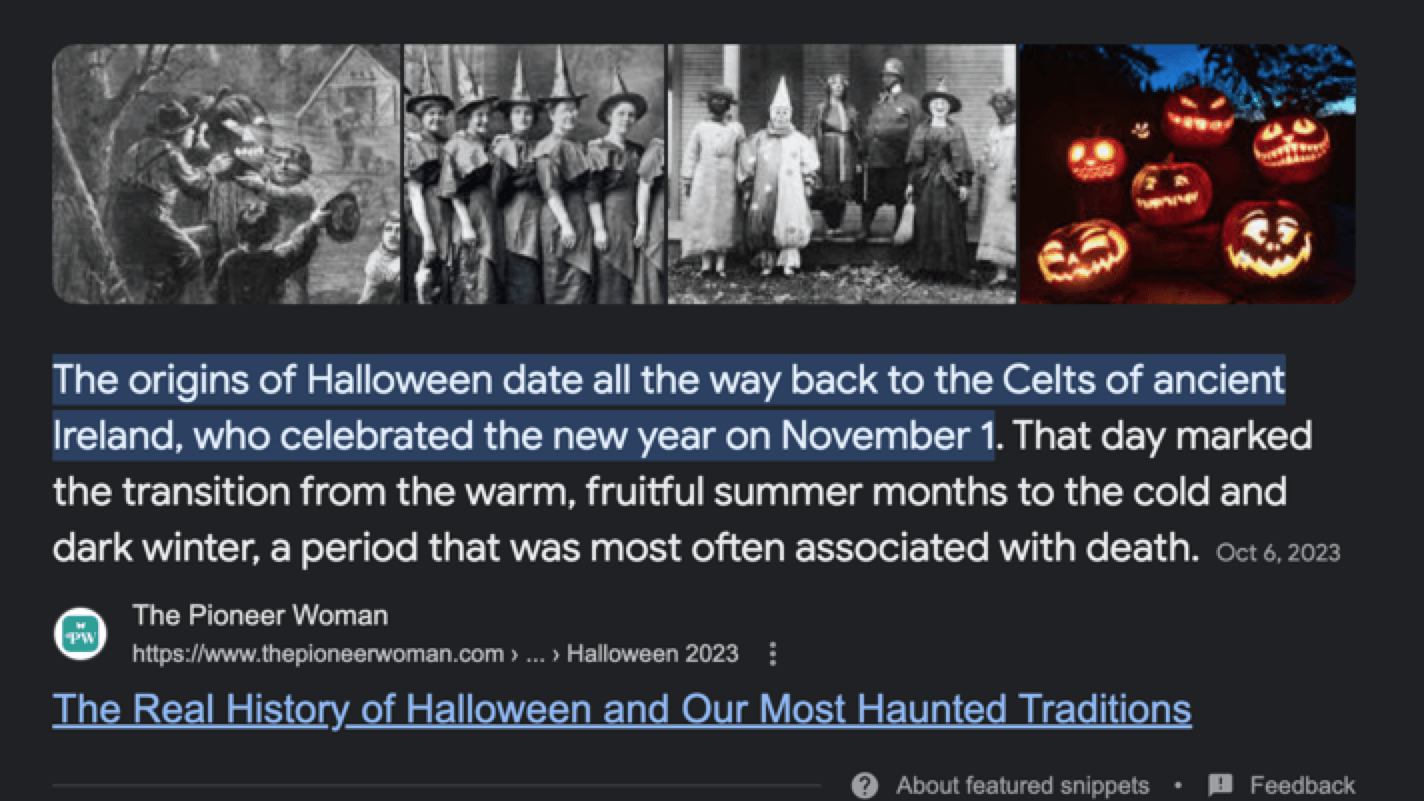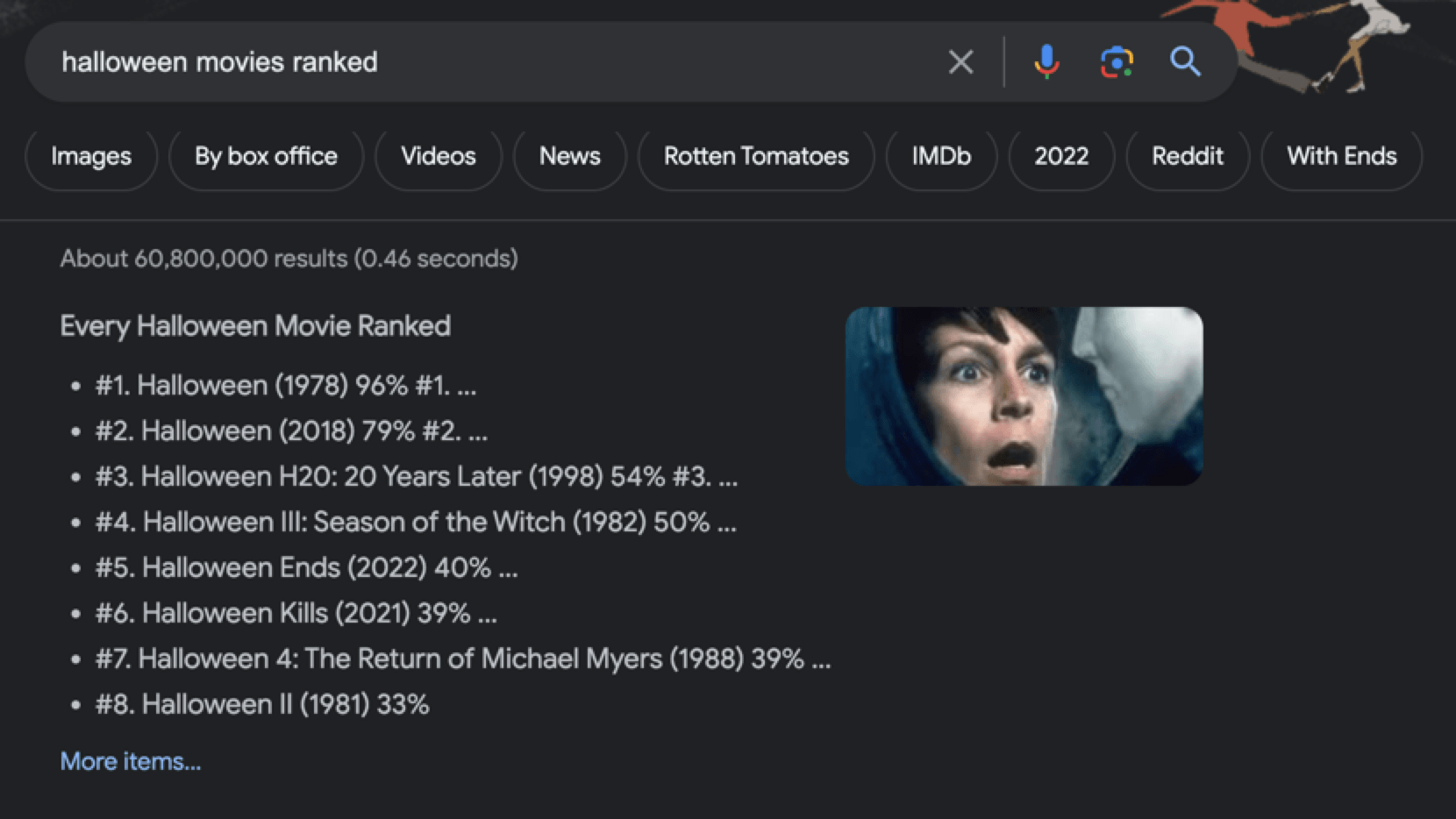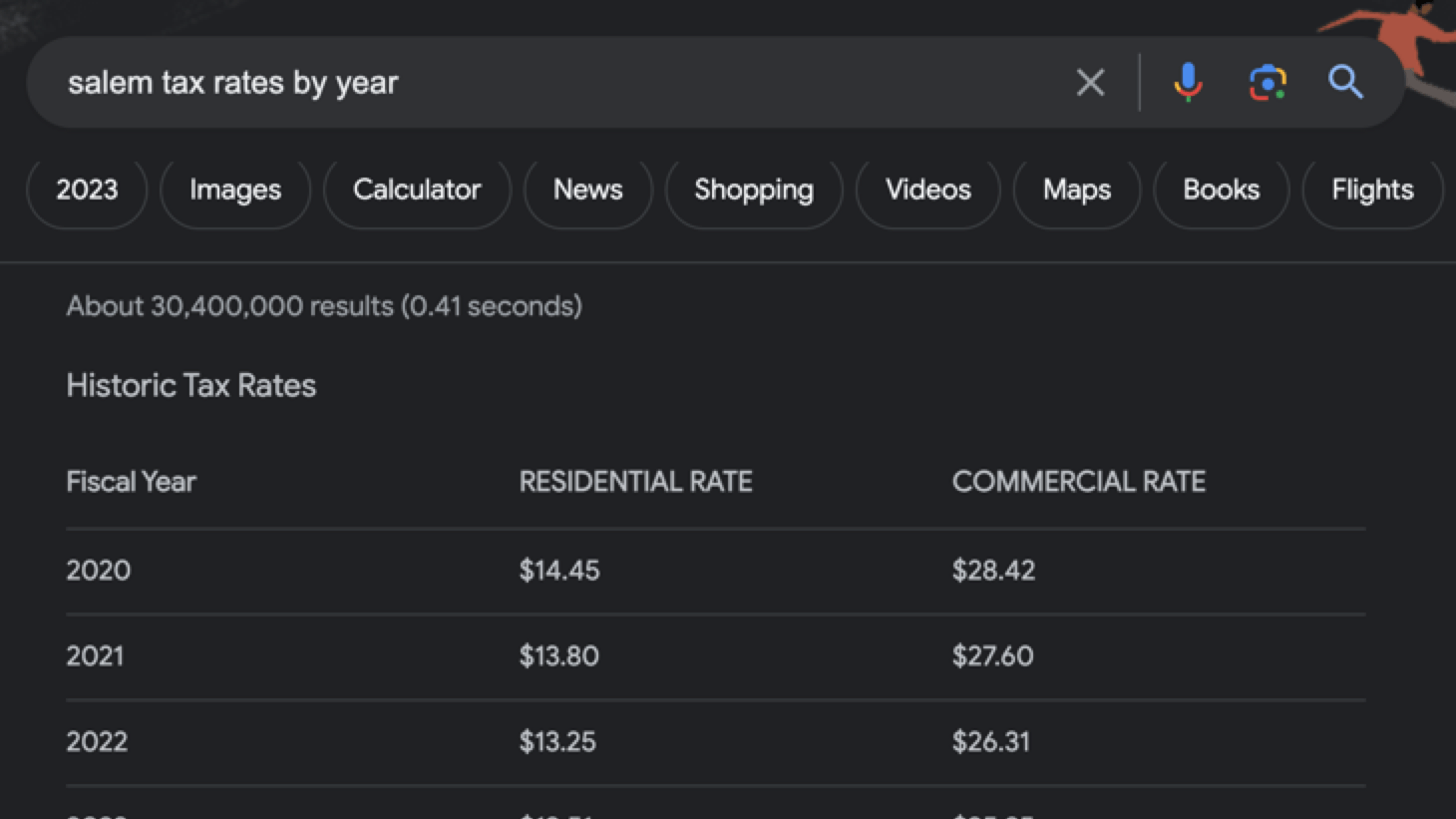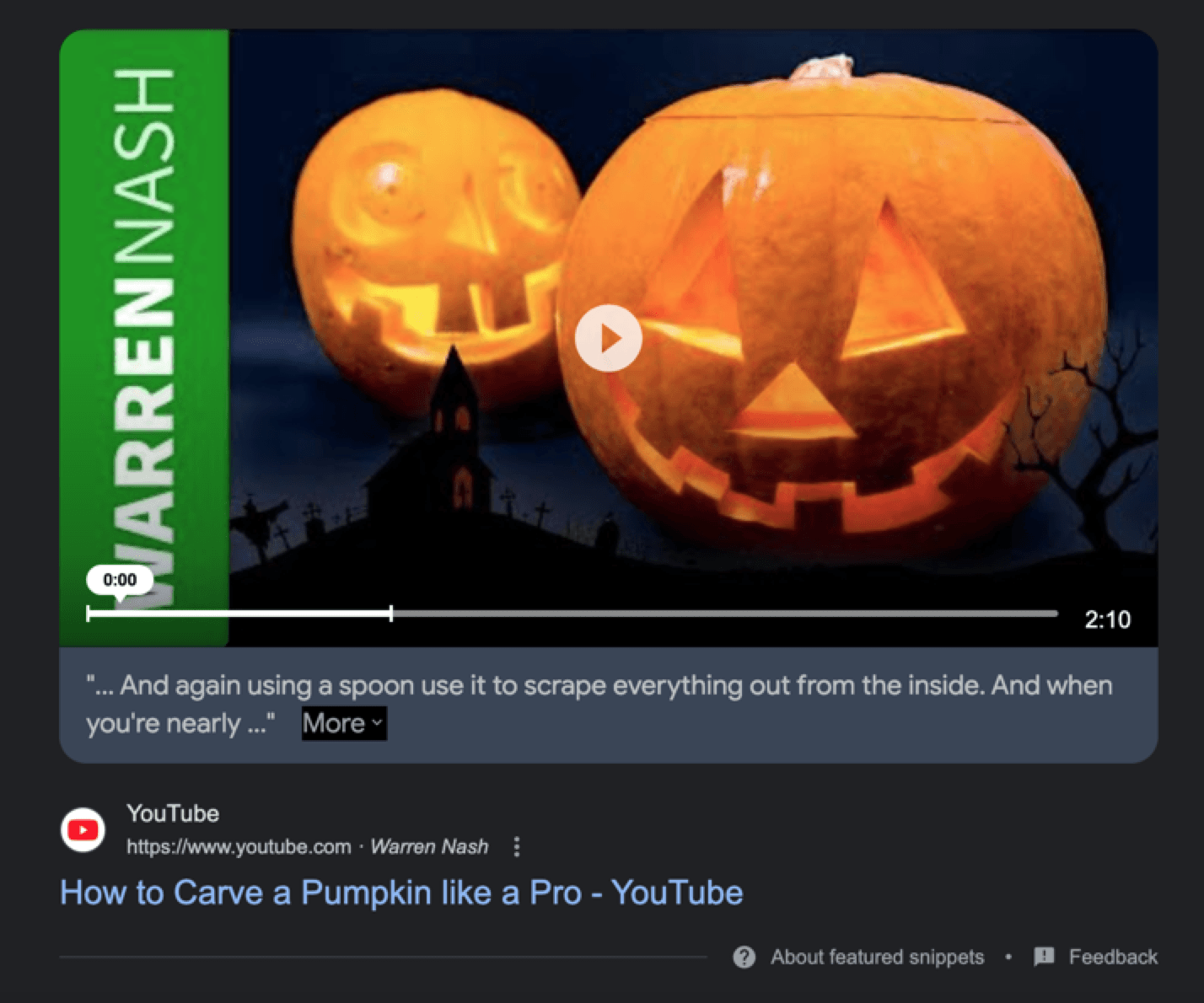Isn’t it great when you Google a question and the search results answer it right at the top, no clicking needed? Those blurbs are called featured snippets, and along with helping users find the information they need fast, they also help websites improve their search engine optimization (SEO) efforts.
Keep reading to learn more about Google featured snippets and their benefits!
What are featured snippets?
Featured snippets are highlighted excerpts of text that appear at the top of search results to quickly answer a search query. Featured snippets are pulled directly from a top-ranking page found in Google’s index and can appear in the form of paragraphs, bulleted lists, videos, and more.
What is the difference between featured snippets and AI Overviews?
There are a few differences between featured snippets and AI Overviews, including:
| Difference | Details |
| Size | AI Overviews are 1764 pixels high, which is significantly taller than featured snippets. |
| Content | Featured snippets answer a user’s core search intent, while AI Overviews summarize the core and surrounding search intent. |
| Citations | AI Overviews cite the multiple sites that make up its answer, while featured snippets cite the single site powering the snippet. |
Types of featured snippets
There are several different types of featured snippets that are displayed on Google. Depending on the content being displayed, featured snippets can show up as:
- Paragraph snippets
- Numbered list snippets
- Bulleted list snippets
- Table snippets
- Video snippets
Paragraph snippets
Paragraphs are one of the most common types of featured snippets and are used to quickly answer questions and provide definitions. Often in definitions, the search query’s key phrases or most relevant keywords will be highlighted or bolded.

Numbered list snippets
Numbered lists are types of featured snippets that are usually used for queries that need a set of steps or a list of items ranked in a specific order.

Bulleted list snippets

Bulleted lists are a type of featured snippet most commonly used for “best of” or “what are” search queries that involve multiple answers.
Table snippets
For data and more complex information, Google will display featured snippets as tables to visualize data for searchers in an organized, user-friendly fashion.

Video snippets
Our last type of featured snippet is a video. Video snippets appear when a video holds the best answer to a query. Often, video snippets are used to answer “how to” searches.

Why are featured snippets important for SEO?
The first benefit of having a featured snippet is obvious: You’re the first search result people see, and you’re pretty hard to miss. From an SEO standpoint, this is huge because it vastly improves your site’s visibility, increasing your chances of earning valuable organic traffic.
Earning a featured snippet brings a few other SEO benefits to the table. Below are four reasons why featured snippets are great for SEO:
- They increase your authority: Having a featured snippet indicates you’re an authority on the subject matter, making searchers more likely to see you as a credible source.
- They indicate quality content: Google choosing your content as a featured snippet indicates that it’s high-quality content. You can use that insight to improve your other pages to match the quality of your featured snippet content.
- They offer better conversion opportunities: Being at the top of search results means you have more opportunities to convert new leads into paying customers.
- They help you outperform your competitors: A featured snippet puts your site above your competitors, and gives you the chance to further outrank and outperform them.
Should you opt out of featured snippets?
While it’s possible to exclude URLs from appearing in featured snippets using the nosnippet rule, it’s not something our SEO experts recommend. Featured snippets give you immense real estate in search results — they’re like a billboard — so it’s worth appearing in them.
How do featured snippets work?
Google’s process for choosing featured snippets is incredibly simple.

“Google’s automated systems select featured snippets based on how well they answer the specific search request and how helpful they are to the user.”
Featured snippets come from ranked website content and are selected by Google’s automated systems and algorithms. If Google feels that a piece of content will help searchers easily discover what they’re looking for within a specific search request, it’ll appear in Position Zero as a featured snippet.
No ranking factors, no technical elements, or strategic link strategies — featured snippets are all about directly answering search queries and giving searchers the information they’re looking for.
Tips to get featured snippets
Because Google’s process for choosing featured snippets is so imprecise, we can’t really give you a detailed list of specific elements that will get you to Position Zero. Even Google doesn’t have a solid answer for that!
What we can give you are a couple of general best practices to follow to increase your chances of getting a featured snippet and landing on Position Zero in the SERPs.
Research keyword opportunities
A crucial part of successfully landing featured snippets is doing good old-fashioned keyword research.
Use keyword research to determine which search queries bring up featured snippets and which ones you currently rank high for. You can even research your competitors and see if they’re ranking for any target keywords or if they hold a snippet.
From there, you can go back to your own site and update pages for those keywords, including them in H1 title tags and addressing search intent in the body of your content.
Target striking distance opportunities
Got content that’s already ranking for keyword with featured snippets?
Focus on the URLs ranking on page one or two. These URLs are within ‘striking distance,’ which means your optimizations (from filling content gaps to improving keyword insertion) could improve your URL’s visibility significantly.
Place content in targeted headings
While some featured snippets will cite content within a lengthy H2 heading, SEOs have found that placing content optimized for a featured snippet within its own heading is an effective tactic for earning a featured snippet.
As an example:
| Before | After |
| H2: What are sister cities?
What do Paris and Rome have in common? They’re sister cities. Sister cities are two cities (often in different countries) with a legal or social relationship. Through this relationship, the cities can promote cultures, encourage travel, and more. |
H2: What are sister cities?
Sister cities are two cities (often in different countries) with a legal or social relationship to promote cultural and commercial ties. |
Directly answer search intent
When addressing search intent, do so clearly and succinctly to improve your chances of snagging a featured snippet.
Think of a featured snippet like a dictionary definition — short and to-the-point.
The point of a featured snippet is to give users the exact information they’re looking for in one or two sentences. Do this by writing your website’s content with the mindset of immediately answering search intent, or the question searchers are asking, and then going into additional detail about the topic.
For example, you could think of your website’s content in a question-and-answer format.
If you’re creating a page on SEO basics, your first H1 should be “What is SEO?” Then, start that section by immediately answering the question you just posed in one to two detailed but concise sentences (e.g., “SEO is [your definition]”).
Use the target keyword
Using the phrase or keyword generating the featured snippet, like ‘what is a sister city’, can also improve your relevancy for the snippet. You can use this phrase in your targeted heading and answer — but watch for keyword stuffing!
Add FAQmarkup
Schema markup helps search engines understand your website and content.
With FAQmarkup, you can provide search engines direct information about the questions you’re answering — specifically the questions (or keywords) generating a featured snippet.
Start optimizing for featured snippets with SEO.com
SEO.com is home to a team of strategists who live and breathe SEO. From improving technical SEO to optimizing for featured snippets with user-centered content, our team of in-house SEOs and content strategists are ready to help you make an impact on SERPs.
Learn more about how our team can help you land a featured snippet today by contacting us online and learning more about our custom SEO services.
P.S. Want to learn more about SEO terminology? Check out our SEO glossary!
Don’t fail your website’s most important test
Get an SEO scorecard of your website for free in less than 30 seconds.
Table of Contents
- What Are Featured Snippets?
- What is the Difference Between Featured Snippets and AI Overviews?
- Types of Featured Snippets
- Why Are Featured Snippets Important for SEO?
- Should You Opt out of Featured Snippets?
- How Do Featured Snippets Work?
- Tips to Get Featured Snippets
- Start Optimizing for Featured Snippets with SEO.com
Let’s Drive Results Together 
Writers

Related Resources
- Share of Voice: Definitions, Calculations, and Importance
- Understand Email Marketing Statistics to Improve Your Impact
- What Are Backlinks? Definition, Tips, and More
- What Are Breadcrumbs? Definition and How to Use Them
- What Are Google Search Partners in Google Ads?
- What Are Hreflang Tags? A Quick Guide
- What Are Keywords in SEO? Master the Basics with SEO Pros
- What Are KPIS and Why Do They Matter?
- What Are Meta Keywords and Should I Use Them?
- What is a Cached Page? A Beginner’s Guide to Cached Web Pages in SEO


